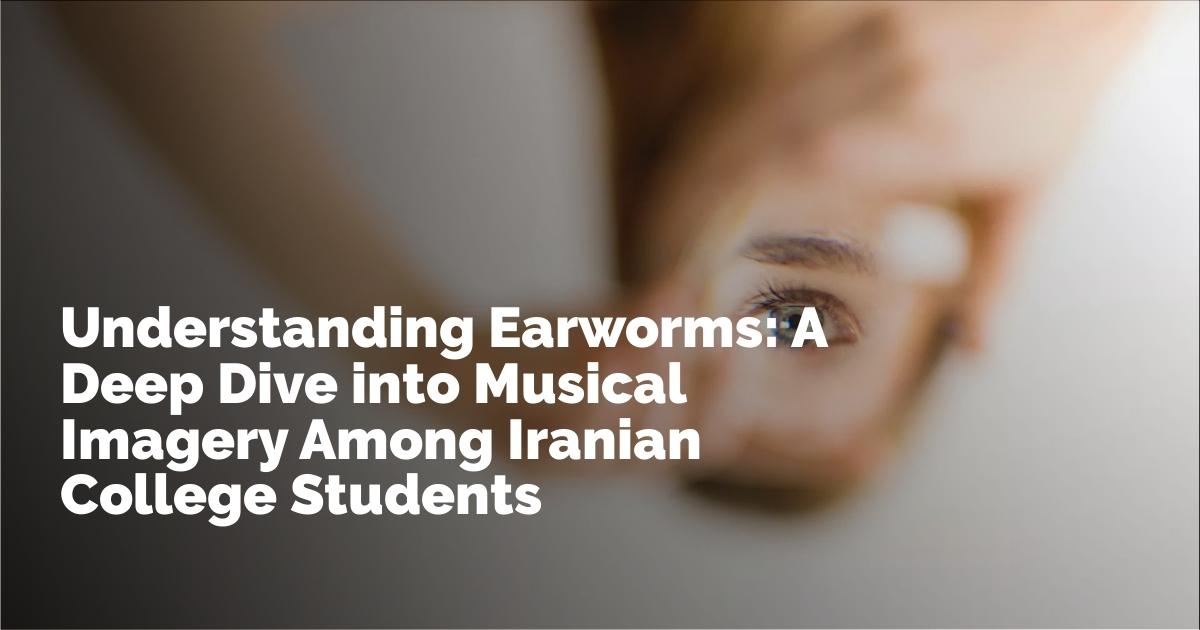Understanding Involuntary Musical Imagery: A Study Among Iranian College Students
Earworms, or involuntary musical imagery (INMI), are snippets of music that play repetitively in one's mind without intentional effort. They are a common experience worldwide, yet research outside of Euro-American contexts remains sparse. This study aims to validate a tool specifically designed to measure earworms among Iranian college students—the Persian Involuntary Musical Imagery Scale (PIMIS)—and investigate the broader phenomena of earworms within this demographic.
The Phenomenon of Earworms
Earworms are an intriguing cognitive experience where music seems to loop involuntarily in the mind. Research shows that they are a universal phenomenon, with different studies exploring their frequency, triggers, and prevalence across various populations. While much data exists from European and American contexts, studies like this in Iran seek to broaden the understanding of how cultural and socio-demographic factors may influence such experiences.
Validation of the Persian Involuntary Musical Imagery Scale (PIMIS)
The PIMIS was developed to measure earworm experiences in Persian-speaking populations. The scale includes 15 items that assess various dimensions of musical imagery, providing a reliable tool for measuring individual differences. Its validation involved translating the original English IMIS into Persian and testing this version on 946 Iranian college students to ensure its reliability and accuracy.
Research Methods and Participant Involvement
To validate PIMIS, participants answered the Persian scale along with established psychological measures, including the Thought Control Questionnaire (TCQ), the Depression, Anxiety, and Stress Scale (DASS-21), and the White Bear Suppression Inventory (WBSI). This multi-phase research involved both exploratory and confirmatory analyses to solidify the scale's psychometric properties within an Iranian context.
Findings on Earworms Among Iranian Students
The study uncovered that the PIMIS is a valid and reliable tool for measuring earworm experiences among Iranian students. It revealed significant phenomenological insights into how these experiences vary with individual differences and socio-demographic factors. For instance, data showed that the frequency of earworms correlates with personality traits and emotional states, which may differ from patterns observed in Western cultures.
Impact of Socio-Demographics and Personality Traits
Socio-demographic factors such as age, gender, and educational background were evaluated alongside personality traits to understand their relation to earworms. Notably, personality traits like neuroticism and openness showed varied correlations with the frequency and nature of earworms, reflecting the complexity of individual cognitive and emotional landscapes influencing these experiences.
Cultural Insights and Cross-Cultural Comparisons
The study emphasized the need for more research into earworms in non-Western societies. It found disparities in frequency and emotional response to earworms when comparing Iranian students to those from other regions such as Africa and China. These differences might stem from cultural variations in music exposure and consumption, highlighting the rich tapestry of global cognitive experiences of music.
Conclusion and Future Directions
The validation of PIMIS and the exploratory findings on earworms among Iranian college students mark a significant step in understanding this global phenomenon within a specific cultural context. Future studies might delve deeper into cultural, linguistic, and cognitive influences on earworms, creating a more comprehensive understanding that transcends geographical boundaries.
출처 : Original Source

